
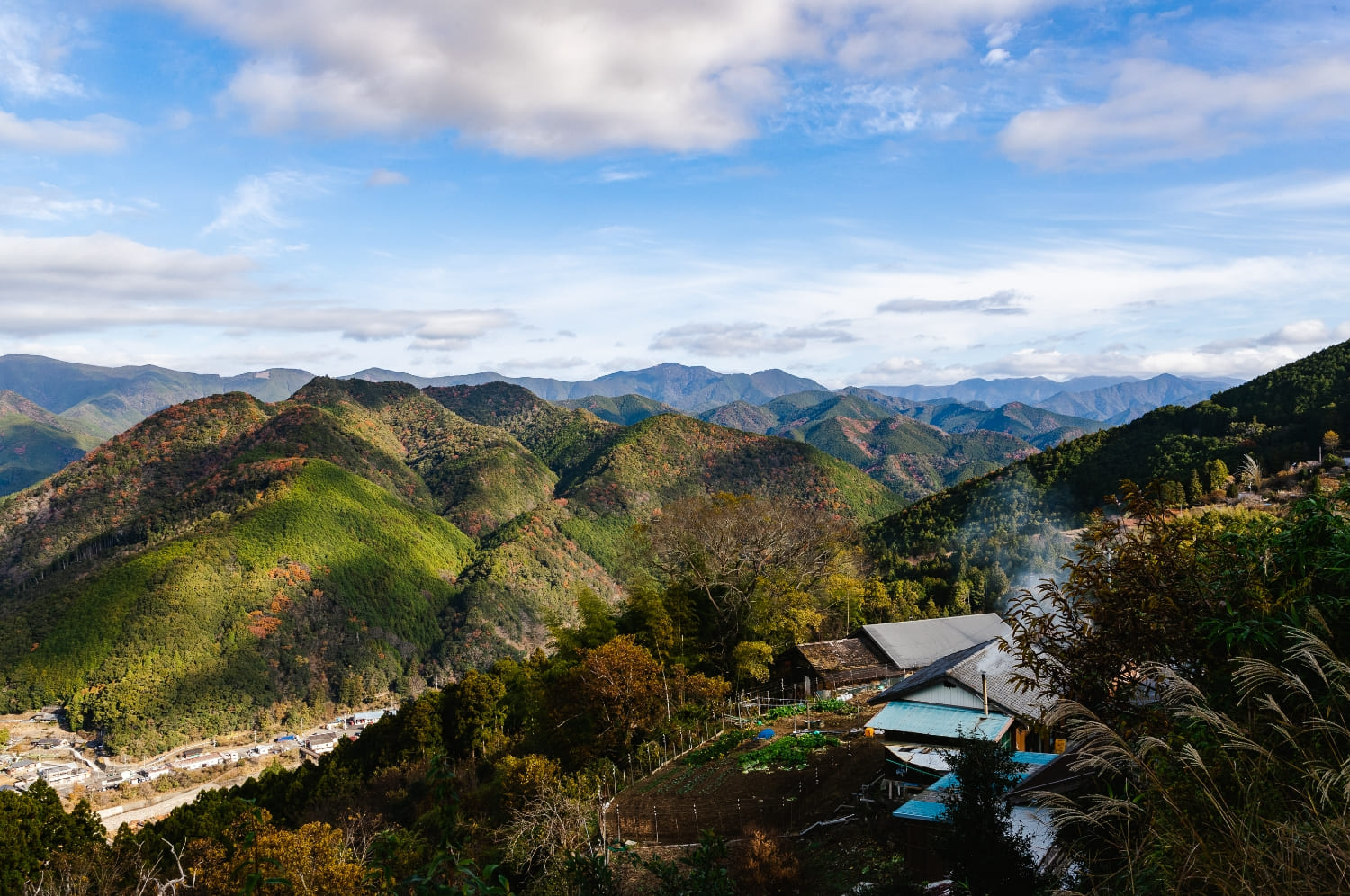
Kumano Hayatama Taisha Shrine and Gotobiki Rock: History and Highlights to Know Before You Visit
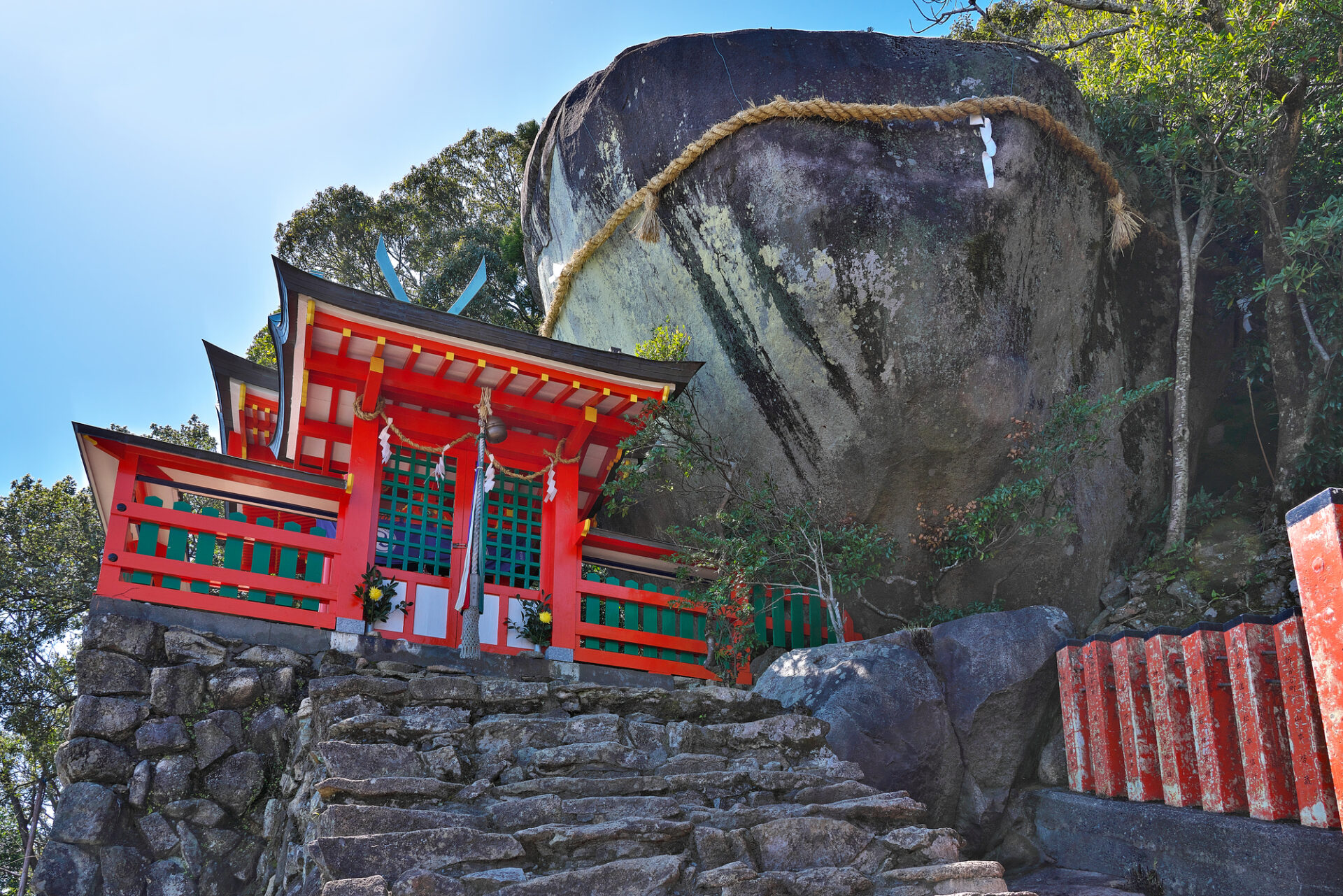
Kumano Hayatama Taisha Shrine is one of the Three Grand Shrines of Kumano (Kumano Sanzan), located in Shingu City, Wakayama Prefecture. Together with Kumano Nachi Taisha in Nachikatsuura Town and Kumano Hongu Taisha in the Hongu area of Tanabe City, it serves as the head shrine of more than 4,000 Kumano shrines across Japan.
The pilgrimage routes leading to these three shrines are collectively known as the Kumano Kodo, a UNESCO World Heritage Site—making Kumano Hayatama Taisha part of this sacred heritage.
In this article, we’ll explore the fascinating history of Kumano Hayatama Taisha and highlight its must-see spots and sacred landmarks. You’ll also find practical information about goshuin (red ink stamps), access, and parking.
Kumano Hayatama Taisha: History, Enshrined Deities, and Must-Know Facts
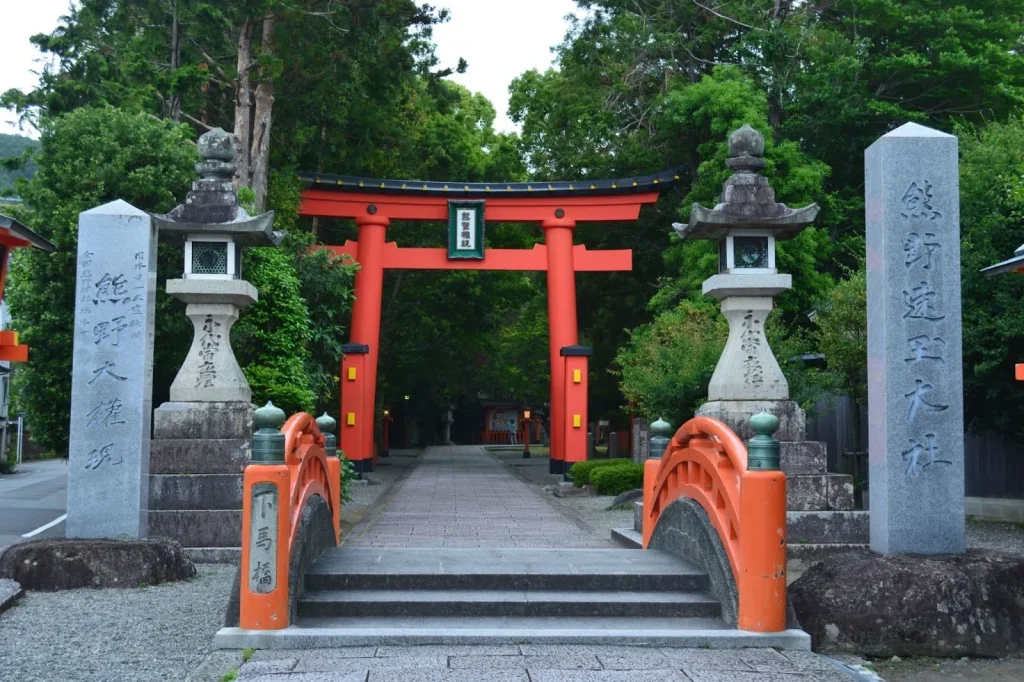
Discover Kumano Hayatama Taisha—one of the Three Grand Shrines of Kumano (Kumano Sanzan): its history and key features, why it forms part of the UNESCO World Heritage Site, and the shrine’s enshrined deities.
Learn the highlights before you go, and you’ll enjoy your visit even more.
History and features of Kumano Hayatama-taisha shrine
According to ancient texts such as the Kumano Gongen Engi, the deities of Kumano are said to have descended upon Gotobiki Rock on Mount Kamikura. In the 58th year of Emperor Keikō’s reign (around 128 AD), a shrine was built at the present location to enshrine them. At that time, the new shrine was named Shingū (“New Shrine”) to distinguish it from the Motomiya (“Original Shrine”) on Gotobiki Rock.
Initially, two shrines were dedicated to the three principal deities—Kumano Hayatama-no-Ōkami, Kumano Fusumi-no-Ōkami, and Ketsumimiko-no-Ōkami—but by the early Heian period (794–1185), twelve shrine buildings had been completed, and twelve deities were enshrined as seen today. The Kumano Gongen Engi and the Ippen Shōnin Eden (Illustrated Biography of Priest Ippen) depict the shrine buildings painted in bright vermilion (tannuri), suggesting that even at that time, they had the same vivid color seen today.
The Nihon Shoki (Chronicles of Japan) records Emperor Jinmu’s visit to Mount Kamikura, indicating that nature worship has been deeply rooted in this sacred mountain since ancient times.
The precept of Kumano Hayatama Taisha is known as Nurewaragutsu no Nyūdō—literally, “Entering the Hall with Wet Straw Sandals.” In ancient times, pilgrims walking the Kumano Kodo were warmly welcomed by the shrine attendants serving the deities, even if their straw sandals were soaked from the rain. This story embodies the spirit of hospitality that continues at the shrine today.
Kumano Nachi Taisha and the UNESCO World Heritage Site “Sacred Sites and Pilgrimage Routes in the Kii Mountain Range”

The UNESCO World Heritage Site “Sacred Sites and Pilgrimage Routes in the Kii Mountain Range” — the Kumano Kodo — was inscribed in 2004. It was the first property in Japan to be listed as a cultural landscape. Kumano Hayatama Taisha is part of this heritage.
Kumano has long been revered as a sacred land that welcomes and saves all people—aristocrats, warriors, and commoners alike—regardless of status or gender. Pilgrims visited the Kumano Sanzan (the Three Grand Shrines of Kumano) seeking blessings such as good health, longevity, and the fulfillment of wishes. The endless streams of pilgrims were likened to a line of ants, giving rise to the nickname “Ari-no-Kumano-mōde” (“Kumano Pilgrimage like ants in procession”). In the late Heian period, records note repeated visits by Retired Emperors Toba, Go-Shirakawa, and Go-Toba.
From the capital, the pilgrimage to the Kumano Sanzan required walking roughly 600 km round-trip, a journey of about one month—and unlike today, it could be life-threatening. So arduous was the Kumano Pilgrimage that it came to symbolize a descent to the underworld, rebirth, and a return to the present world—hence Kumano’s epithet, “the Land of Rebirth.”
Which deities are enshrined at Kumano Hayatama Taisha?
The three grand shrines of Kumano—Kumano Hongu Taisha, Kumano Nachi Taisha, and Kumano Hayatama Taisha—enshrine the same twelve deities.
At Kumano Hayatama Taisha, the principal (enshrined) deities are Kumano Hayatama-no-Ōkami and Kumano Fusumi-no-Ōkami, often explained as deifications of the movement of water. Venerated as a married pair, they are also worshipped for enmusubi (harmonious relationships and matchmaking).
Goshuin (Red Ink Stamps) and Omamori (Charms)
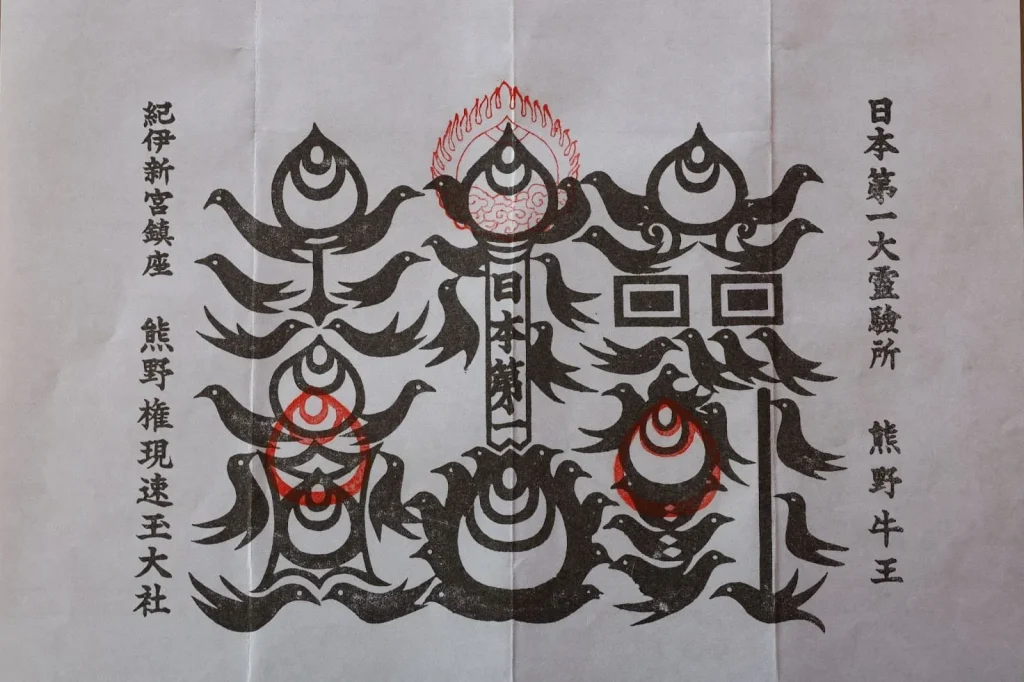
You can receive two kinds of goshuin (shrine stamps): one from Kumano Hayatama Taisha and one from Kamikura Jinja, an auxiliary shrine (sessha) in Hayatama Taisha’s detached precinct on Mount Kamikura. There are also limited zodiac-themed goshuin issued each year.
Although it is not a goshuin, you can also obtain an ofuda known as the Kumano Gōō Hōin (牛王宝印). Printed in the distinctive karasu-moji (“crow script”), it comes in different designs at each of the three Kumano shrines and has long been kept for recovery from illness and protection from misfortune.
The sacred tree of Kumano Hayatama Taisha, the nagi (Nageia/Podocarpus nagi), is revered as a symbol of enduring bonds because its leaves are difficult to tear. For this reason, the shrine offers omamori such as the “Nagi-mamori” and “Nagi ningyō” (nagi doll), popular for enmusubi (harmonious relationships and matchmaking).
Don’t-Miss Highlights at Kumano Hayatama Taisha
Here are the must-see spots when you visit Kumano Hayatama Taisha.
Haiden (Worship Hall)
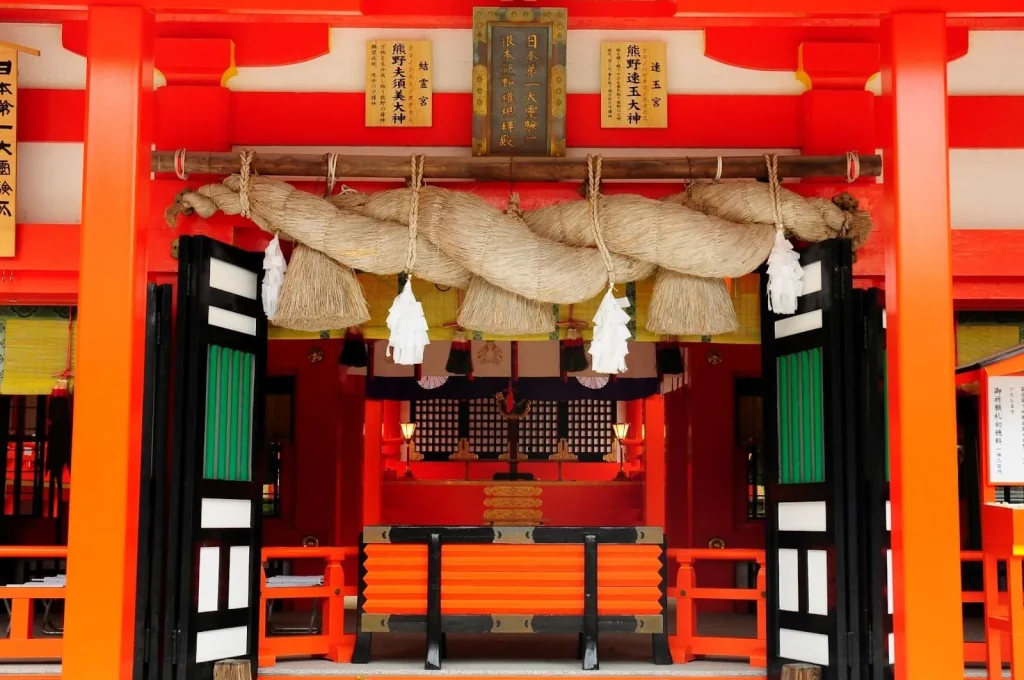
The vividly vermilion Haiden features the First Hall (Yui-no-miya) and Second Hall (Hayatama-no-miya), where the principal deities Kumano Hayatama-no-Ōkami and Kumano Fusumi-no-Ōkami are enshrined. To the right of these two halls stand the Three Shrines, the Upper Three Shrines, and the Eight Shrines.
Along the front approach (omotesandō) you’ll also find Yatagarasu Jinja, dedicated to Yatagarasu—the divine three-legged crow said to have guided Emperor Jinmu to the land of Kumano—and Tajikarao Jinja, dedicated to Tajikarao-no-Mikoto, the deity who embodies physical strength.
Kumano Museum of Sacred Treasures (Shinpōkan)
Kumano Hayatama Taisha preserves around 1,200 sacred artifacts, including items designated as National Treasures and Important Cultural Properties. Among them are furnishings said to have been dedicated by Ashikaga Yoshimitsu in the Muromachi period (1336–1573). It’s an ideal place to delve into the history of Kumano.
Entrance fee
Adults: 500 yen (free for high school students and below)
opening hours
9:00-16:00.
Day on which a museum
Open daily (closed for repairs due to ageing as of 2022/3).
Nagi (Rhododendron nagi)

Towering within the shrine precincts is a great nagi (Nageia/Podocarpus nagi) said to be around 1,000 years old. Revered as a symbol of Kumano Gongen, it is customary to make an offering while carrying a nagi leaf in one’s pocket.
At about 18 meters tall, it is one of the largest nagi trees in Japan and has been designated a National Natural Monument as the “Nagi of Kumano Hayatama Jinja.”
Kamikura shrine Gotobiki rock
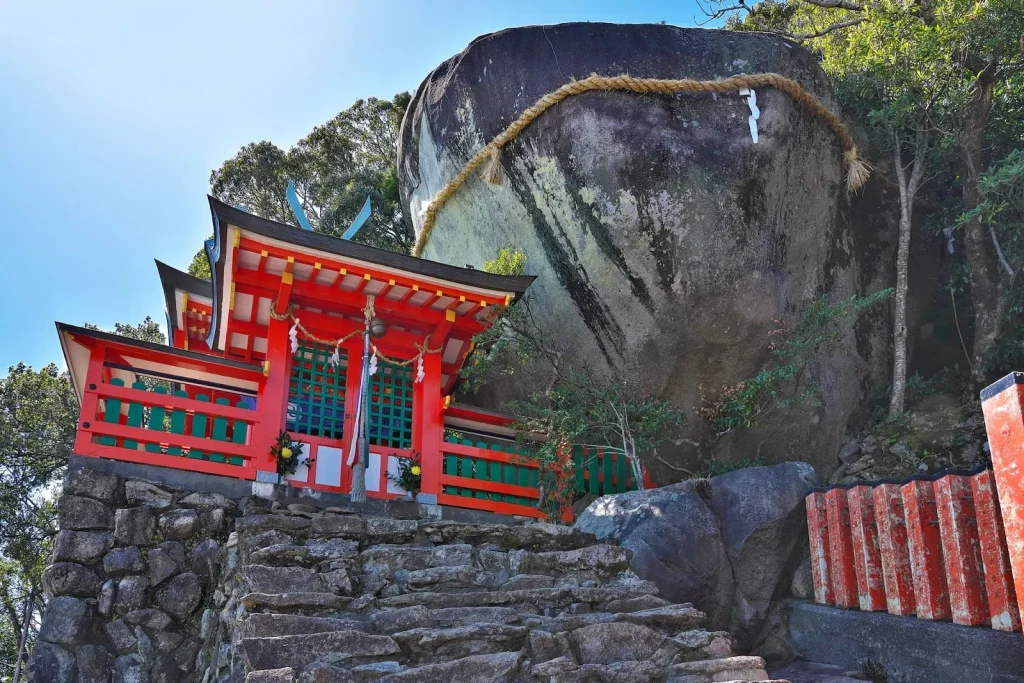
It is said that the Gotobiki Rock at Kamikura Shrine, located at the southern end of Mt Gongen (Mt Kamikura), about 17 minutes’ walk from Kumano Hayatama-taisha Shrine, is where the Kumano gods first descended. Later, the descended deities were welcomed and enshrined at the Kumano Hayatama-taisha shrine, and so the shrine came to be known as ‘Motomiya’ and the Kumano Hayatama-taisha shrine as ‘Niimiya’.
This is the place where Kumano worship can be said to have originated, so if you visit Kumano Hayatama Taisha, Kamikura Shrine is a must-visit spot, but you may need comfortable walking shoes and physical fitness when visiting. The elevation is low at about 80 m, but it takes some stamina to climb the 538 steep steps that lead up from the torii gate. Once you have climbed the precipice, you will be greeted by a large giant rock. The Kamakura-zukuri stone steps on the approach are said to have been donated by Minamoto no Yoritomo.
Gotobiki’ means toad in the local dialect and is thought to have been associated with the shape of the giant rock.
The Kamikura Shrine is home to the famous Oto Matsuri festival. Every year on 6 February, nearly 2,000 men run down stone steps carrying torches. The participants are called ‘Agariko’, dressed in white with a rope wrapped around their waists, and many people come to watch the powerful Agariko run down the steps as soon as the gate opens. (Only those involved in the Corona Disaster are allowed to take part in the festival.)
Address
1-13-8, Kamikura, Shingu, Wakayama
Access
15-minute walk from Shingu Station, 17-minute walk from Kumano Hayatama Taisha shrine.
How to get there? Getting to Kumano Hayatama-taisha shrine
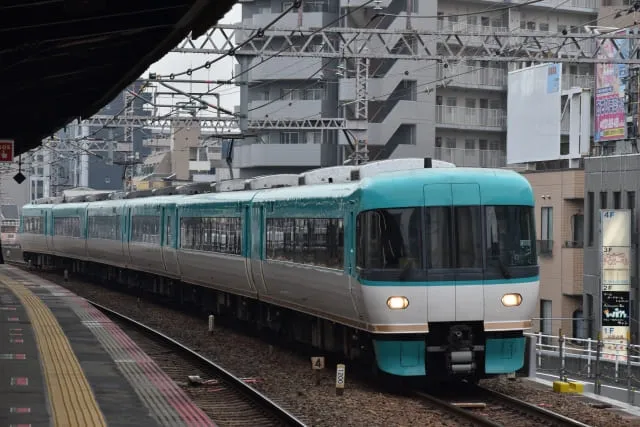
Trains and buses
The station is within walking distance of JR Shingu Station.
Shingu Station is approximately 4.5 hours from Shin-Osaka Station on the limited express Kuroshio, or 3.5 hours from Nagoya Station on the limited express Nanki.
The time required
- 20-minute walk from JR Shingu Station.
- From JR Shingu Station, take the Kumano Kotsu or Mie Kotsu bus and get off at the Gongen-mae bus stop (time required: 5 minutes).
- From JR Shingu Station, take the Kumano Kotsu Fureai Bus and get off at Hayatama-taisha-mae bus stop (time required: 5 minutes).
Car
If you are coming by car, there is a free car park near the precinct, with a limited number of parking spaces (around 20), but a temporary car park is open during peak season.
Parking address.
1-6 Shingu, Shingu, Wakayama 647-0081
the time required
From the Kansai region, less than 2 hours from the Kamitonda IC on the Hanwa Expressway – Kisei Expressway.
From the direction of Nagoya, 40 minutes from the Kumano Odomari IC via the Tomeihan Expressway, Ise Expressway and Kisei Expressway.
Charges.
Free (no booking required)









